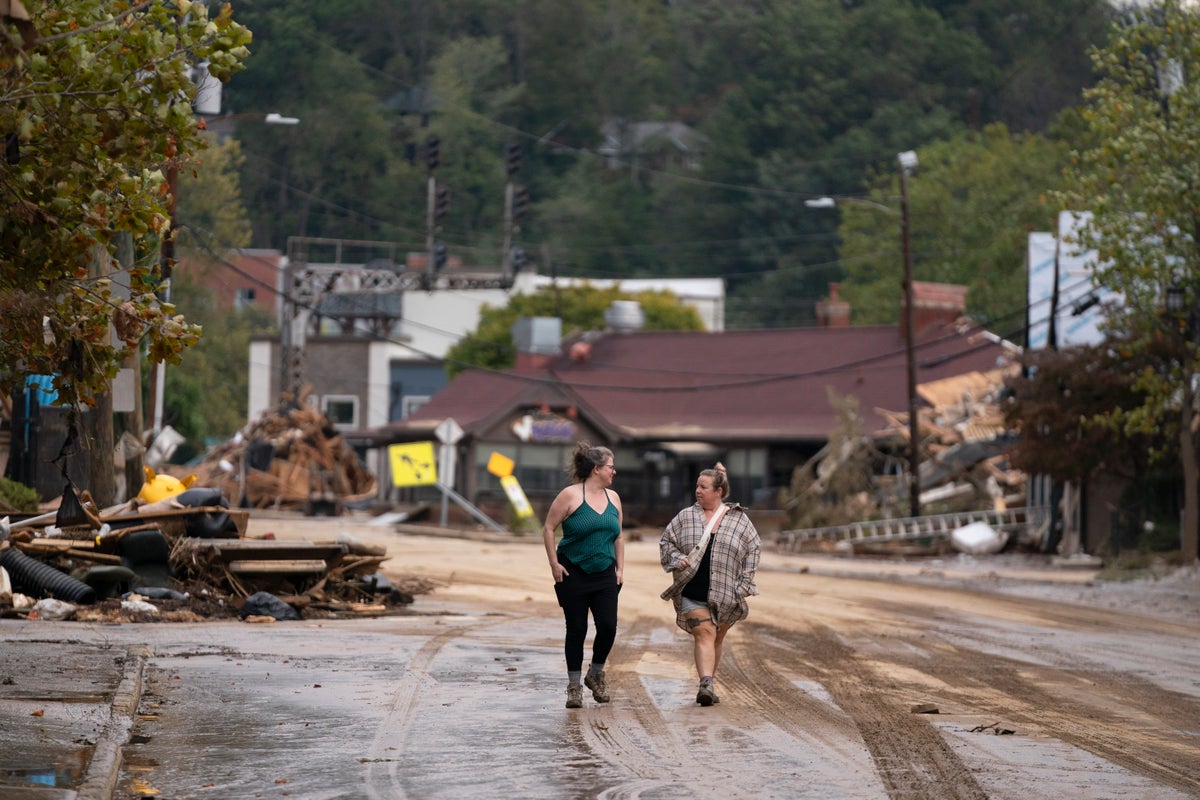CLIMATEWIRE | Hurricane Helene demolished the notion there are places on Earth immune from climate change — an already shaky premise that was further discredited by widespread damage to Asheville, North Carolina, a so-called climate haven.
Even so, experts say climate is a growing factor in many people’s relocation decisions. And some places do have lower comparative risks depending on the type of disaster. That can — and should — influence their decisions on where to move, they say.
“There’s no such thing as a climate haven,” said Jesse Keenan, a professor of sustainable real estate and urban planning at Tulane University. “But what has happened is that various people, including myself, have identified cities where people are moving to, where consumer preferences are shaping the demand for places.”
On supporting science journalism
If you’re enjoying this article, consider supporting our award-winning journalism by subscribing. By purchasing a subscription you are helping to ensure the future of impactful stories about the discoveries and ideas shaping our world today.
Lower disaster risks, milder weather and cheaper insurance costs — all affected by local climate variables — are some of the preferences driving people’s decisions on where to move, he said.
Keenan is careful to caution that no location is completely immune to extreme weather events. His own work has been cited — out of context, he says — in lists of so-called climate havens produced by media outlets over the last few years, describing places purportedly isolated from extreme weather events such as hurricanes, wildfires and floods.
Social media users began resurfacing many of these lists in the aftermath of Hurricane Helene, pointing to the irony. Asheville — where Helene left entire neighborhoods submerged in floodwaters — has frequently appeared on them.
“Everyone has been asking about Asheville as a climate haven,” said Kathie Dello, North Carolina’s state climatologist. “We’ve never really agreed with that. There’s always been a risk of flooding and fire.”
While climate havens may be a myth, Keenan said his work has highlighted the fact that some cities around the U.S. are becoming climate “receiving zones” — places where some people are choosing to move, in part, for climate-related reasons.
Asheville is among them, he said.
“Lots of people have moved from the coastal Carolinas to Asheville,” he said. “There’s a lot of emerging data that suggests that climate is certainly on the rank-ordered priorities — it’s on the list of factors that’s shaping things.”
Other U.S. cities and towns are attracting inbound migration too in part for climate-related reasons, Keenan added. None of them are disaster-free, but some of them have lower relative risks compared to other cities across the same state or region of the country.
“Ocala, Florida, is the fourth-fastest-growing metropolitan area in the U.S.,” he said. “And a big part of the reason people are moving to this part of central Florida is it has one of lowest measures of flood risks, and it’s far inland from any immediate wind damage, and the insurance prices there are significantly cheaper” than other parts of Florida.
Climate is rarely the only reason motivating a move, Keenan added. And it can be hard to tease out the relative importance of climate factors compared with other variables that influence where people live, such as family relationships and economic conditions.
In fact, some parts of the country have high rates of development and inbound migration despite the high risk of disasters such as wildfires or hurricanes. That means even for people who are aware of an area’s climate risks, it’s not always enough to outweigh other factors affecting their decisions to move.
An analysis by the real estate company Redfin in August found that thousands more people are moving into fire and flood-prone areas across the U.S. than are moving out of them. And Phoenix is one of the nation’s fastest-growing cities, despite also being one of the hottest.
Yet for the people who are moving out of these places and into other rapidly growing cities, climate can be a motivator.
Some research suggests that climate factors play a role in migration around the country. A 2023 study, led by researchers from the climate risk analysis firm First Street, highlighted regions where people are leaving, or population growth rates are declining, in response to growing flood risks.
Another First Street study, published in August, analyzed a wider variety of climate risk factors, including floods, heat waves, droughts, wildfires and strong winds. It found that there are some areas exhibiting “risky growth,” where climate threats are outweighed by other amenities — but also some areas exhibiting climate abandonment in response to growing weather-related threats.
At the same time, much of Keenan’s understanding of people’s personal decision-making around relocation has come from his own interviews with people moving in or out of certain areas across the country.
“They all told variations of the same story,” he said. “It was too hot in Phoenix at the wrong time of year, and they were getting too old for the heat, or they couldn’t afford insurance and the cost of living in coastal Florida or Carolina.”
‘Push and pull factors’
After 12 years in Sarasota, Florida, Allison and Tom Whitten were looking for a change.
Tom had been the director of tennis at an athletics club there since 2008, and they loved the city, but the heat and sun were getting to be too much. The weather felt like it had grown hotter since they’d moved there, making outdoor sports increasingly uncomfortable. By 2020, they decided to leave.
“We really needed shade — indoor courts or shade,” Allison said in an interview with POLITICO’s E&E News. “What we opted for was San Francisco, with 50-to75-degree year-round temperatures and a little bit more overcast.”
Weather wasn’t the only factor. The couple was already familiar with California, having previously lived in Redding in the northern part of the state. They felt more politically aligned with that part of the country. And they were also limited to locations offering the kinds of jobs they were looking for, Allison added.
But climate was still a major factor in their decision to move across the country.
For most people in the U.S., though, relocations tend to happen at smaller scales. And local climate risks are often still important to people making decisions about where to buy or rent a new home in the same city or county, said Jeremy Porter, head of climate implications research at the climate risk modeling firm First Street.
“Only about 15 percent of moves year over year are across state lines,” Porter said. “When people move relatively local, they’re keeping the same jobs, staying close to family, have strong community ties. But they also know what streets flood because they’ve lived there so long.”
That means there’s a growing demand for climate risk assessments on residential properties for factors such as floods, wildfires or air quality, he said — even among folks who aren’t moving far.
First Street first started conducting climate risk analyses about eight years ago, in part to help fill a gap in the public perception of climate change, Porter said. At the time, many people thought of climate change as a problem for future generations, not something affecting their lives today.
Nearly a decade later, the intensification of extreme weather events worldwide has begun to correct that narrative.
“There’s definitely a market for the data now,” Porter said. “Eight years ago when we started, people weren’t actively seeking out climate risk information about their community and their property, but I think it has made its way into a lot of those components of their life now.”
Real estate companies are taking notice.
Just last month, the real estate marketplace Zillow announced it would include First Street’s climate risk data on its for-sale property listings across the U.S., including analyses on floods, wildfires, winds, heat and air quality.
These kinds of partnerships are more evidence that climate is an increasing factor in where people choose to live, and one that may continue to grow in importance as climate impacts intensify across the country.
“According to new survey data from Zillow’s Consumer Housing Trends Report, about three-quarters (73%) of buyers said at least one climate risk influenced where they shopped for a home,” said Claire Carroll, a Zillow communications manager, in an email to E&E News. “While climate risk appears to be top of mind for home shoppers — it’s just one of several factors that play a role in the overall home-buying decision.”
Porter agreed that climate can be one consideration when looking for a new home, but is rarely the be-all, end-all variable.
“There are those push and pull factors that essentially weigh on a person’s decision to move or relocate,” he said. “Those amenities and disamenities are essentially part of that calculus. Climate exposure just becomes a disamenity. It’s just another thing you pile into the push-and-pull factors of an area.”
Reprinted from E&E News with permission from POLITICO, LLC. Copyright 2024. E&E News provides essential news for energy and environment professionals.



























































